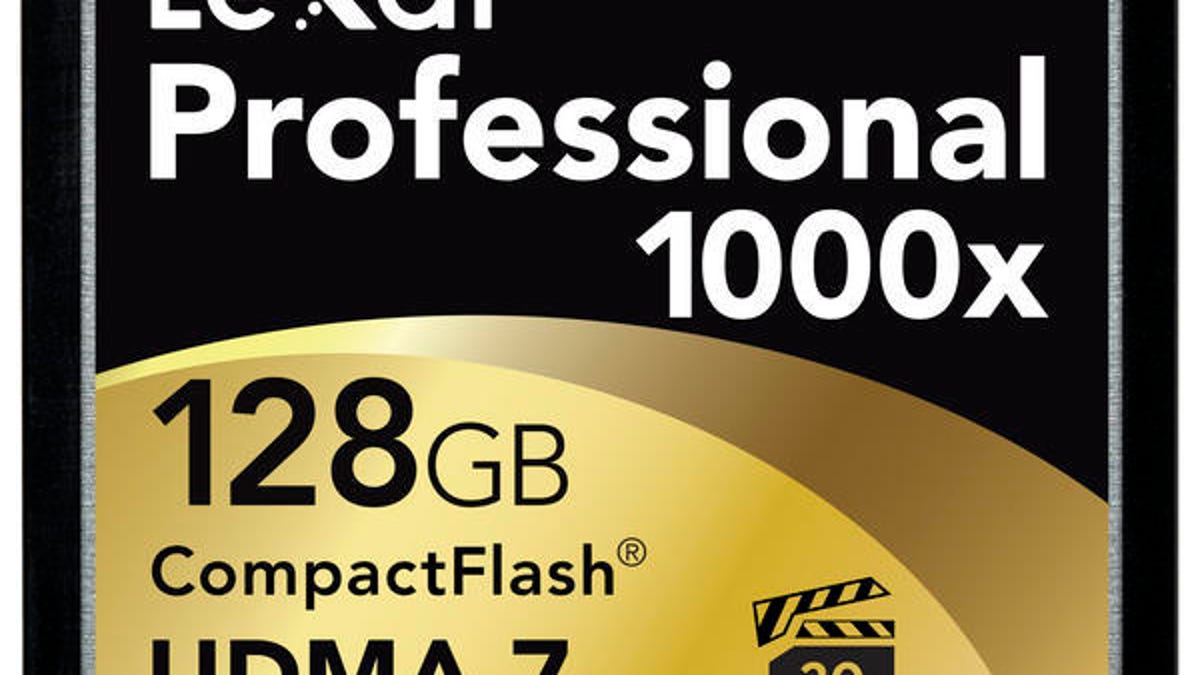Lexar pushes CompactFlash speeds with 1000X cards
The new top-shelf cards can read data at 150MB per second--but brace yourself for top-shelf prices. A 32GB model costs $300.

Lexar announced a 1000X-rated CompactFlash memory card line today that the company guarantees can keep pace with professional-quality video recording.
The 1X speed from days of yore meant 150KBps, and the new line of 1000X cards reaches sustained read speeds of 150MB per second. Write speeds are a smidgen slower--966X, or 145MBps--but still enough to keep up with the Video Performance Guarantee (VPG-20) "to enable professional-quality video capture at high frame rates with no dropped frames," the company said.
The cards are priced for professionals, too, with retail prices of $169.99 for 16GB, $299.99 for 32GB, $529.99 for 64GB, and $899.99 for 128GB. Lexar announced them in conjuction with next week's CES show and said the cards will be available in February.
Even high-end cameras typically can't match those data-transfer speeds, but high rates can still help when shooting bursts of photos and when transferring images to a computer--if you have higher-speed ports such as USB 3.0 on the computer.
"Our goal is to allow shooters to focus on capturing great shots, including high-resolution images and HD or 3D video, instead of using up precious time processing in the studio," said Manisha Sharma, Lexar's director of product marketing for cards, in a statement.
Lexar and its top rival, SanDisk, are on the brink of a bigger change than just fast speeds using updates to the UDMA interface in today's CompactFlash cards. The CompactFlash Association has adopted a new flash card format called XQD. It uses the mature PCI Express interface for faster transfer speeds, and it can reach capacities beyond 2 terabytes.
Lexar wouldn't comment specifically on its plans, but XQD support seems inevitable--Nikon's new high-end D4 SLR has slots for both XQD and CompactFlash cards, and the CompactFlash Association expects manufacturers to move to the new format as cameras advance.
In a statement to CNET, Sharma said of XQD:
The CompactFlash Association (CFA) recently announced the release of the XQD specification for new high-performance memory cards. Based on the PCI Express specification and designed to serve as a base for future performance scaling, the XQD specification is the third approved standard by the CFA, joining CF6 and CFast 1.1. As is the case with any memory card standard, adoption from camera manufacturers is key to its success. As a leading CFA member, Lexar has been evaluating this technology, and will continue to do so as the market develops to determine if we will offer XQD cards in the future.
The latest 6.0 rev of CompactFlash, which uses UDMA 7, reaches 167MBps through use of parallel data-transfer lines. A single lane of a first-generation PCI express connection--which uses high-speed serial communications rather than carefully synchronized parallel lines--reaches 250MBps. Second-generation PCIe reaches 500MBps and third-generation PCIe 1GBps.
XQD, however, isn't backward compatible with CompactFlash.
Updated at 2:56 p.m. PT with the card's precise write speed.

